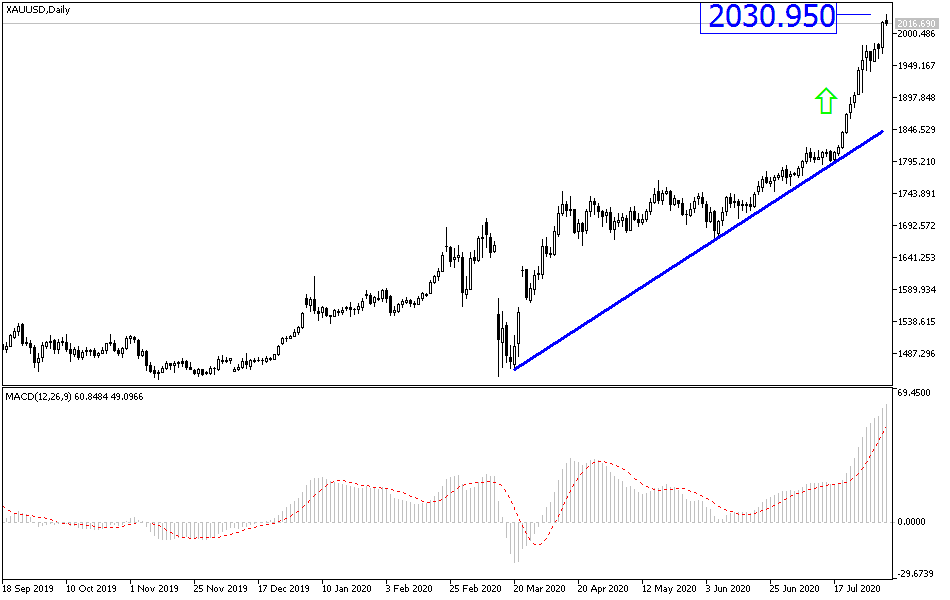The US dollar's gains did not last long, as, after the positive start for the USD/JPY this week pushing it towards the 106.47 resistance, the American currency did not find enough motivation to complete that attempt. The pair retreated to the 105.63 support before settling around the 105.75 level at the beginning of Wednesday’s trading. Pressure on the dollar returned after new stimulus plans to revive the US economy failed to pass at a time when record numbers of US coronavirus cases and deaths are increasing. Investors’ attention has now turned to expectations about US job numbers and the start will be from today with the announcement of ADP numbers for change in nonfarm payrolls in the United States. The US-China conflict was a catalyst for the Japanese yen as a safe haven in achieving its gains against the other major currencies, most notably the dollar.
Microsoft is in talks to purchase parts of TikTok, in a forced sale after Trump threatened to ban the Chinese-owned video app, which includes 100 million US users and hundreds of millions worldwide. The Trump administration says TikTok is a national security concern. It was not clear how the ban will take effect, as this federal power has not been used before with a consumer application. TikTok denies it will send US user data to the Chinese government.
On Monday, Trump told reporters that the United States "should get a very large percentage of the transaction price because we are making that possible," adding, "We want and believe we deserve a large portion of the price while coming to America, coming to the treasury." TikTok was under review by the U.S. Foreign Investment Commission, known as CFIUS, an American government group chaired by the Treasury secretary studying mergers for national security reasons, for its acquisition of another video app, Musical.ly, in 2017. The president can approve or reject a deal recommended by the Inter-Agency Committee. CFIUS collects the registration fee, but that is above $300,000.
On the economic side, a report by the US Department of Commerce showed another significant increase in new orders for US manufactured goods in June. The ministry stated that factory orders increased by 6.2% in June after rising by 7.7% in May. Economists had expected factory orders to jump 5.0 percent, compared to the 8.0 percent gain originally reported in the previous month.
The biggest increase in factory orders came as durable goods orders increased 7.6 percent in June, after rising by 15.0 percent in May. Transportation equipment orders led the increase in orders for durable goods again, rising by 20.2 percent in June. The report also said that orders for non-durable goods also jumped by 5.0 percent in June, after increasing by 2.0 percent the previous month. Shipments of manufactured goods also increased by 9.8 percent in June, after rising by 3.0 percent in May. The stocks of manufactured goods increased by 0.6 percent in June, after increasing by 0.2 percent in the previous month, with shipments jumping far more than stocks, the inventory-to-shipments ratio fell to 1.51 in June from 1.65 in May.
According to the technical analysis of the pair: Bears are trying to push the USD/JPY pair to move below the 105.00 support to push the pair to new record support levels as the general trend remains downward. There will be no real reverse of the current trend without breaching the 108.00 resistance. Investors will not care that technical indicators reached oversold areas, and the focus remains more on the factors of the weak US currency, including Coronavirus cases, US stimulus plans, tensions between the world's two largest economies and political anxiety caused by Trump's future in the presidential election to be held in November.
As for the economic calendar data today: From Japan, there will be statements by the Governor of the Japanese Central Bank. From the United States, the ADP survey will be announced to measure the change in US employment in the non-agricultural sector, and the ISM PMI for the services sector data will be released.


